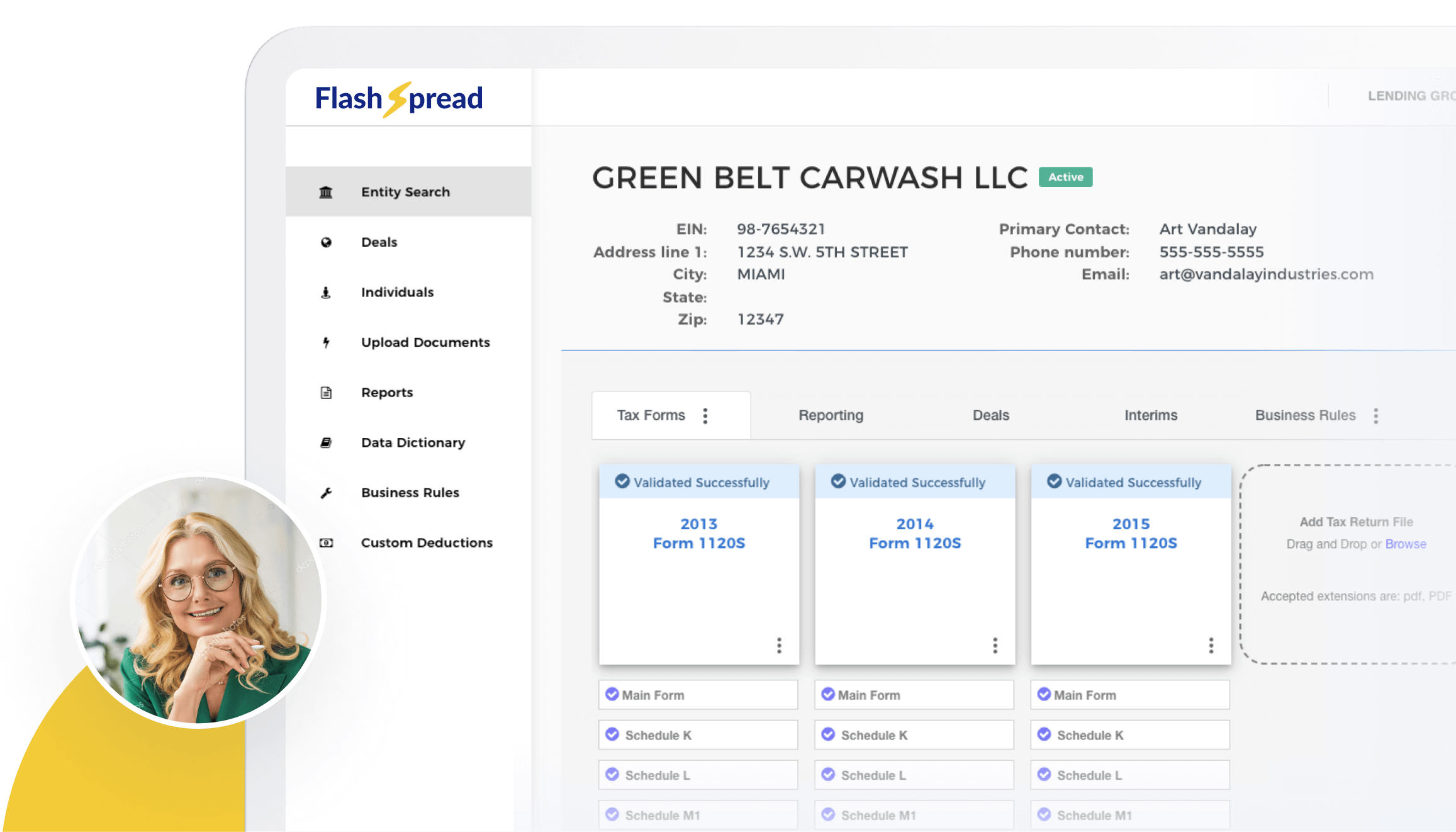While the criteria that goes into commercial loan decisions may seem more nuanced than the hard rules and ratios that define the consumer loan approval process, the commercial lending process is not quite as mercurial as it may seem. Financial statements involve the same due diligence, analysis and data-based decision-making one might expect in the consumer space.
In the gestalt, the commercial lending process requires a lender gets a clear picture of a business’ unique profile. Doing this involves multiple steps. One part may be meeting with company management, doing research into a company’s particular industry or niche, and looking into a company’s performance history. Part and parcel of that is assessing a business’ financials. What are the statements commercial lenders typically assess?
For commercial underwriting, lenders typically ask for:
- Business bank and financial statements
- P&L statements
- Cash flow forecasts
Let’s look at each in turn.
Table of Contents
Business Bank Financial Statements
While documentation may vary from one commercial lender to the next, the majority of lenders will want recent business bank statements. In assessing these financial statements, a lender looks at a company’s account balance over time to see if they are able to pay off a loan while also fulfilling business obligations and other debts. This becomes especially important for seasonal businesses, in which income can vary from one quarter to the next.
A secondary factor considered in analyzing financial statements relates to how responsibly a business is with money. Is that business able to hold onto cash in case of emergencies? Does spending rise along with revenues, or does a business act as carefully with money during boon times as it does during tougher times of the year? Finally, a lender will want to review financial statements to see whether or not a business has received an excessive number of NSF notices or overdraft fees.
How many bank statements should a borrower expect to provide? Three, at a minimum, with four being a safer starting point if a lender wants to put its best foot forward.
Profit & Loss Financial Statements
Sometimes referred to as an income statement, a business’ P&L gives a lender an even clear picture of that business’ revenue. P&L statements typically takes into account all invoices from goods or services sold, then balances these out against the expenses involved in running the business. These expenses can include utilities, wages, insurance, and more.
Subscribe to BeSmartee 's Digital Mortgage Blog to receive:
- Mortgage Industry Insights
- Security & Compliance Updates
- Q&A's Featuring Mortgage & Technology Experts
As with a company’s financial statements, a P&L report shows the lender how much profit a business usually has on hand as cash to spend. Under ideal circumstances, a business looking to qualify for a commercial loan will want to show a profit every month, with enough of a buffer in place that loan repayments are guaranteed each month, even if business slows. Lenders can also use a P&L to explore additional financial criteria, including the fixed and variable costs related to a business’ operations. These documents can also provide insights into the viability and strength of different revenue streams or high spend categories that may introduce risks for some businesses.
Cash Flow Statements and Forecasts
Finally, there is the cash flow forecast to consider. You may, at this point, see a pattern— yes, cash is king in commercial lending, and cash flow is one of the most important indicators of a business’ qualification for a loan. Typical requests from lenders in terms of cash flow may be projections for the next 12 months, with at least 2 months of cash flow forecasting.
Elements of a cash flow statement include:
- A business’ net income, which is calculated as monies received through selling goods and services minus all monies paid to suppliers or toward operational costs or to staff via payroll and salaries;
- A business’ depreciation, which reflects the reduced value of any depreciable assets over time;
- Additional gains and losses associated with a business; and
- overall cash on hand.
As with the other financial statements submitted, lenders use cash flow data to determine whether or not positive inflow of cash into a business is sufficient to make repayments on the loan each month. Cash flow can be a critical factor, as it will contain data from depreciation and other gains or losses that may not be reflected in financial statements or other financial reports.
Contact FlashSpread today to discover how our experts can transform your financial statements!




